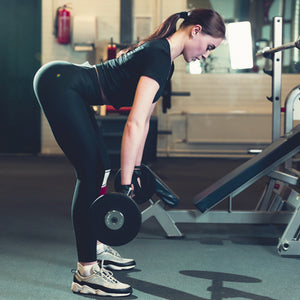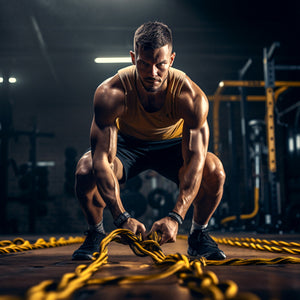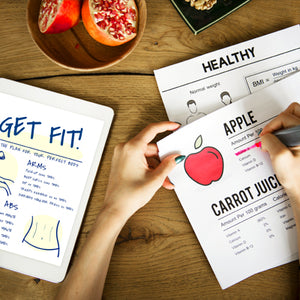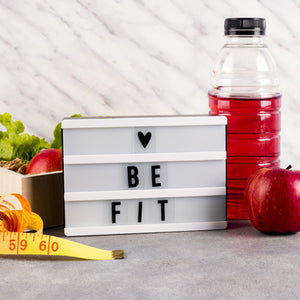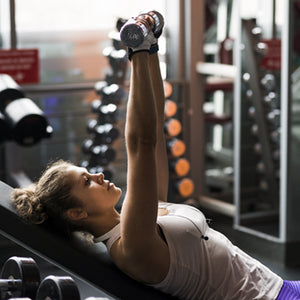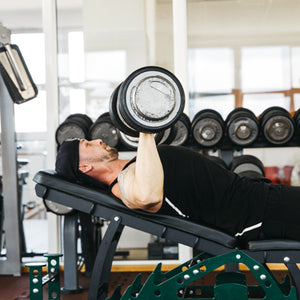| Try Now!

Biceps Workouts - 10 Things You Must Know
There aren't too many lifters that tell me they don't want bigger arms. In fact, I've never heard anyone say that.
Unfortunately, there's no magical workout or solution to getting bigger arms. There are a few concepts you need to understand when you want to build bigger biceps.
Many of us know the main constant, which is doing a basic curling motion... but what else could there be? If you want to add strength and size to those biceps, you don't have to do set after set of endless curls.
So if your gains have stalled on your own, check out these 10 things you must know about building biceps.
10 Biceps Workouts Tips
1.) You Need to Understand How Your Bicep Works
While you may think the bicep is pretty straightforward — the bicep has two heads and is a bit more complex than you think.
For example, the brachialis is a smaller muscle that lies under the biceps. Increasing the size of your brachialis will increase the size of your arm.
Anatomy of Your Bicep
- Short Head - This head is best trained with your arms in front of your body — preacher curls, high cable curls
- Long Head - This head is best trained with the arms behind the plane of the body — incline dumbbell curls, hammer curls
- Brachialis - This muscle is best worked with your hands in a neutral position — hammer curls
- Brachioradialis - This muscle is best worked with your hands in an overhand position — reverse-grip curls
2.) Focus Training Each Head
You can train each head and smaller muscle in your upper arm by choosing the right exercises. One tip is to remember that a fully stretched muscle is capable of a stronger contraction.
That means curling movements with your arms in front of your body will keep the long head from fully stretching and will help target your short head. On the other hand, when your arm is behind your body, it puts a full stretch on your long head.
When choosing exercises, know that you need to hit all heads and smaller muscles — doing endless dumbbell curls simply won't do that.
3.) Train Your Back
Did you know that rowing or pulling movements that train your back also hit your biceps?
This is why many lifters like to train their biceps when they do back work.
Train your back before you do your biceps so you can get the best bang for your buck with training.
4.) Start with a Mass Builder First
While there aren't many compound lifts that you can use to train your biceps, the chin-up is probably the closest because it will work your lats and biceps.
While the chin-up isn't a specific bicep move, you need to choose an exercise that you can move the most weight first.
Standing barbell or dumbbell curls are two other great choices for your first exercises.
5.) Grip Width Matters
Remember the bicep anatomy above? Did you know adjusting your grip width can help target certain heads of the bicep?
The long head is located outside of the short head, so using a grip that's more narrow than shoulder width will emphasize its development. On the other hand, using a grip that's outside of your shoulder width will shift focus to the short head.
One approach you could try is to do two sets of barbell curls with a closer grip and 2 more sets with a wider grip.
6.) Use the Right Weight
If you want to get bigger and stronger biceps, you have to push your body. If you've been handling the same weight for the same sets and reps for months, you're shortchanging your gains.
Choosing the correct weight to get the best contraction while progressing when it gets too easy is the key to growth. Don't fall into that comfort zone.
7.) You Should Try to Isolate the Muscle
As you get better with targeting different angles of your bicep, you may want to add in some isolation exercises.
Concentration and preacher curls force your arm to stay stabilized and removes any momentum you may use.
You will need to use a lower weight and they are best done at the end of your workout.
8.) Train Your Brachialis
Getting a bigger and stronger brachialis means you need to do more neutral-grip movements like hammer curls.
Doing so will increase the size of your arm and build a bigger looking bicep.
9.) Lock Your Elbows
There aren't many compound lifts that specifically train your biceps, but there is something we can do to improve the efficiency of our isolation movements.
Using a weight that is too heavy or using proper form forces you to use momentum to lift the weight.
What do you think happens when a lifter pull their elbows forward as they curl? Their shoulders start moving the weight. You are reducing the tension on the muscle and essentially ruining the exercise.
Keep your biceps targeted by locking your elbows to your side. The weight won't get raised as high, but your biceps will take the brunt of the resistance.
10.) Don't Forget Your Forearms
Once you blast your biceps, doing some forearm work makes sense. What many lifters fail to understand is that these smaller muscles assist you with curls.
Grab a loaded barbell or some dumbbells and try some reverse curls on a preacher bench — this targets the brachioradialis and brachialis.
Wrapping It Up
If you've been one that spin their wheels doing endless curls without any gains, try some of these tips out.
Use the correct weight, perform the exercise with proper form, and don't cheat your reps — you're only cheating yourself.

